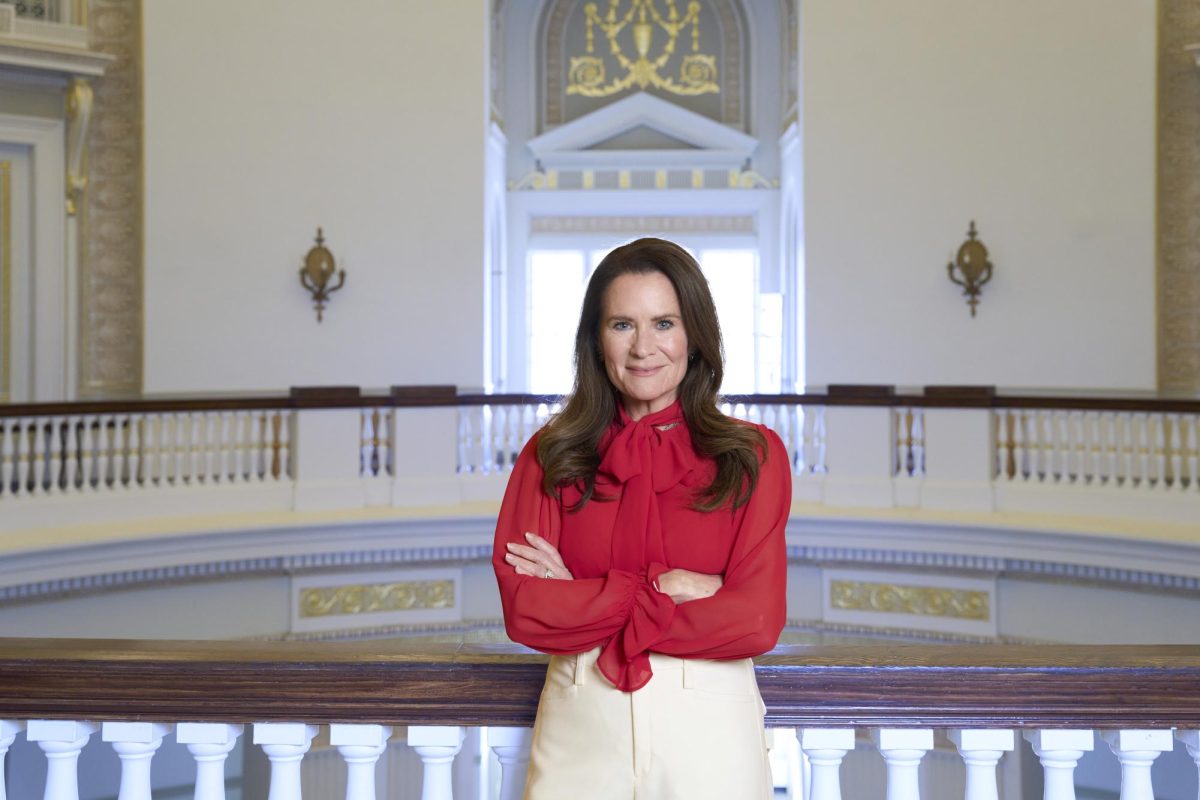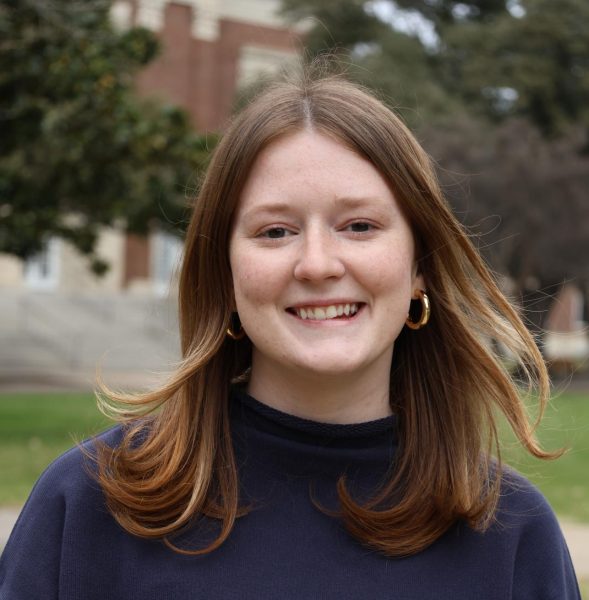She’s traveling 300 days this year. Last week, she did shots of bourbon with Stephen Colbert on The Late Show. She goes on stage in front of crowds of 65,000, adoring fans stop her for selfies in the airport. And, she’s 90 years old.
Jane Goodall, renowned activist, poked her head from behind the red curtain at McFarlin Auditorium on Wednesday night as SMU President R. Gerald Turner introduced her to the packed auditorium at the Clements Foundation Tate Lecture. A neat ponytail of white hair framed her small face and wide grin. A little hunched but very steady, she pulled her teal pashmina closer as she stepped to the podium.
There are two Janes, she tells the crowd. Herself, the one she later describes as “plain Jane and no nonsense,” and National Geographic Jane—the 20-something blond in safari khakis, kneeling next to a chimpanzee. National Geographic Jane is the one people listen to, she said, but SMU saw a Jane who is much more than just the woman who studied chimpanzees.

Before the 8 p.m lecture, Goodall sat down for a student forum before attending a dinner with SMU President R. Gerald Turner and various SMU trustees. At the dinner, she tried to step up onto the stage set up in the Mack Ballroom in Umphrey Lee. President Turner urged her to use the steps on the side. She acquiesced, but made sure everyone knew that she was perfectly capable of doing it her way.
It’s no surprise, then, that after celebrating her 90th birthday in April, Goodall’s activism sped up, not slowed down.
“Honestly, I don’t know how she keeps her energy up. She runs circles around all of us,” said Kara Solarz, director of communications for the Jane Goodall Institute. As she said this, Goodall darted across the green room to sign a book for a young fan.
“She feels so strongly about spreading her message of hope and knows that people listen to her,” Solarz continued. “I think that gives her the energy.”
Goodall started her career as an activist after attending a primatology conference in 1986, where she heard peers discuss the deforestation and animal testing chimps were facing. Almost four decades later, Goodall is one of the oldest activists in the world. And she remains hopeful for the future.
She knows that the news is full of “doom and gloom,” as she puts it. But through her work with the Jane Goodall Institute, she sees inspiring conservationist efforts all over the world, rainforests bouncing back from deforestation and animals thriving after years on the brink of extinction.
“We need to balance the grim news with the good news. And there’s a lot more good news than people think,” she told the Daily Campus.
That’s not to say Goodall thinks good news is enough.
“There’s a window of time, but it’s closing, and we need to get together now and take action. Words aren’t enough.”
Goodall, in a one-on-one interview with the Daily Campus, spoke directly to SMU students heading to the polls in November.
“Vote for nature,” she said. “And your vote does count, because it’s all the people that are undecided and don’t vote that can make a huge difference.”
“There are so many people putting the economy first and not really worrying about the environment, but look at what’s happening in the world,” Goodall said. “Somehow there’s got to be a balance, and the environment must be part of their portfolio.”
She repeated many of the same sentiments in the lecture later that evening. And despite the serious subject matter, she kept the audience engaged and laughing.
She introduced herself with a series of grunts.
“That’s chimpanzee for ‘Me Jane,’” she said.
She continued with an impression of a threatened male chimp puffing himself up and shaking his fist.
“Does this remind you of any male politicians you know?” she asked.
“National Geographic Jane” was on full display—the young girl breaking into a male-dominated sphere, the woman who changed everything the world knew about chimpanzees. For the kids in the audience, some clutching stuffed chimpanzees or colorfully illustrated Jane Goodall biographies, this is what they came for.

She recalled learning from David Greybeard (her favorite male chimp) that chimpanzees made tools. A rapt crowd listened as she remembered the chimp Frodo throwing her and dragging her around the forest.
“Two times, he almost killed me,” she said. The audience gasped.
But Goodall was not shy to contradict the “National Geographic Jane” image. She prefers being known as an ethologist, not a primatologist. Her favorite animals are dogs, not chimps. And while she may look sweet, her spunk shines through.
She sat down with Brad Cheves, SMU’s vice president for development and external affairs, for the Q&A portion, bringing her blue SMU mug with her from the podium. Goodall and Cheves clinked glasses as audience members lined up to ask Goodall questions.
“Mine’s water,” Cheves said.
“Mine isn’t,” said Goodall, smiling slyly at the audience.
Kids asked most of the questions, an apt representation of Goodall’s work. Her program Roots & Shoots is active in 71 countries as of this year. Roots & Shoots aims to get kids from preschool to university age engaged with the environment and humanitarian efforts. Goodall hopes the program continues to expand to every country in the world
Goodall’s hopeful for three main reasons: the resilience of nature, the indomitable human spirit, and the youth. At the end of the lecture and after a packed day, Goodall met some of the children backstage.

Brooklynn Blakeley, an 11-year-old student from Frisco, queued with some of the other kids waiting to meet Goodall.
Brooklynn’s father, Travis Blakeley, attended the lecture with her.
“For someone who has children to see so much hope in their eyes and a future generation taking a similar initiative as Dr. Goodall, it inspires me to do something as a 40-year-old man who probably sat on the sidelines a little too long,” he said.
The Blakeleys met Goodall earlier that day, after the student forum in Hughes-Trigg. Brooklynn is starting a Roots & Shoots chapter at her school. Goodall is her hero.
“I’ve always been very passionate about the environment and protecting it,” Blakeley said. “Just knowing that there is another woman out there that was at some point the same age as me, really inspires me to become more passionate and make more change.”
Goodall gave Blakeley a tight hug when Blakeley showed her the stuffed chimps she had brought to meet her hero. Goodall even inscribed Blakeley’s journal with a message. “For Brooklynn,” she wrote. “Follow your dreams.”
Jamie Lam contributed to this reporting.










